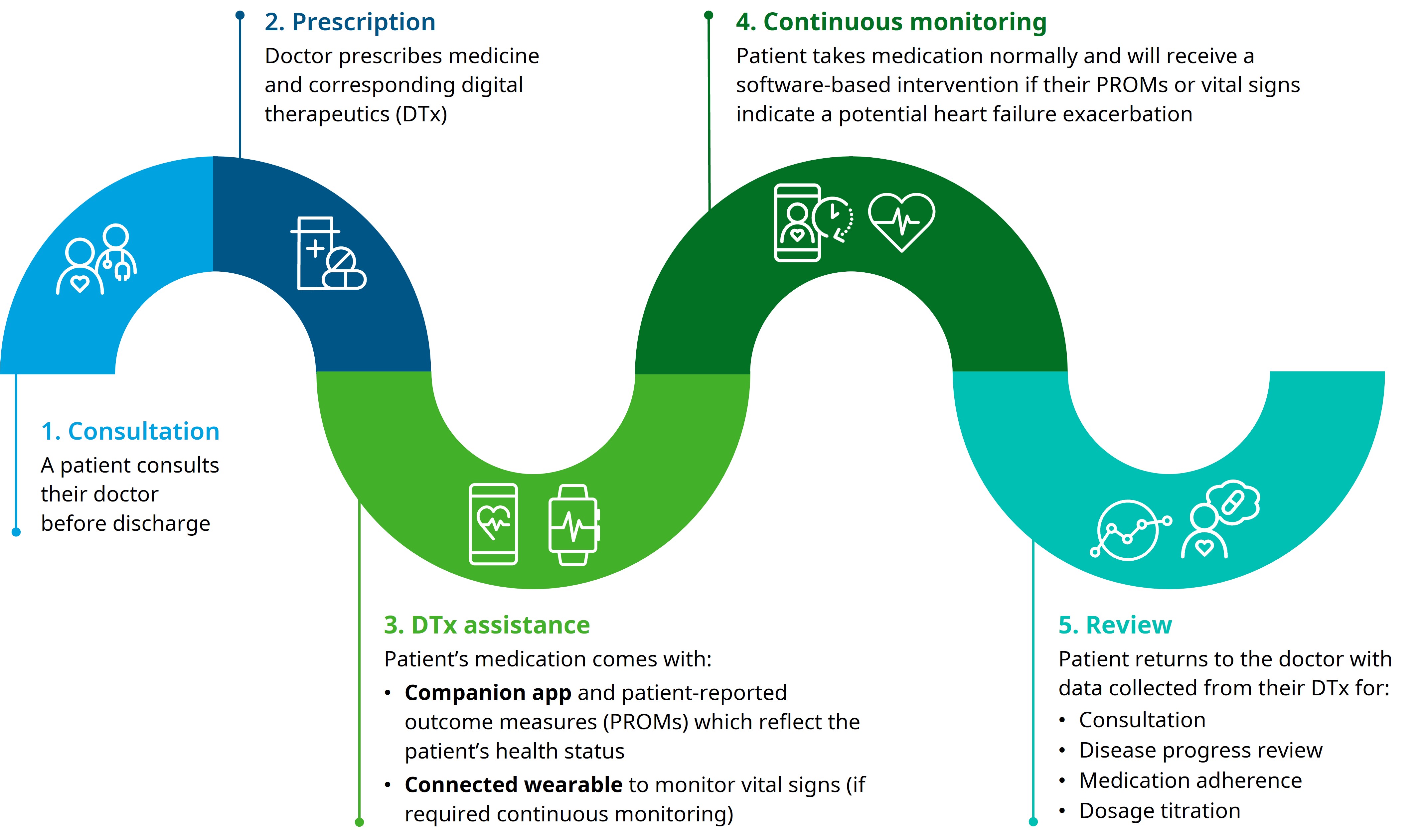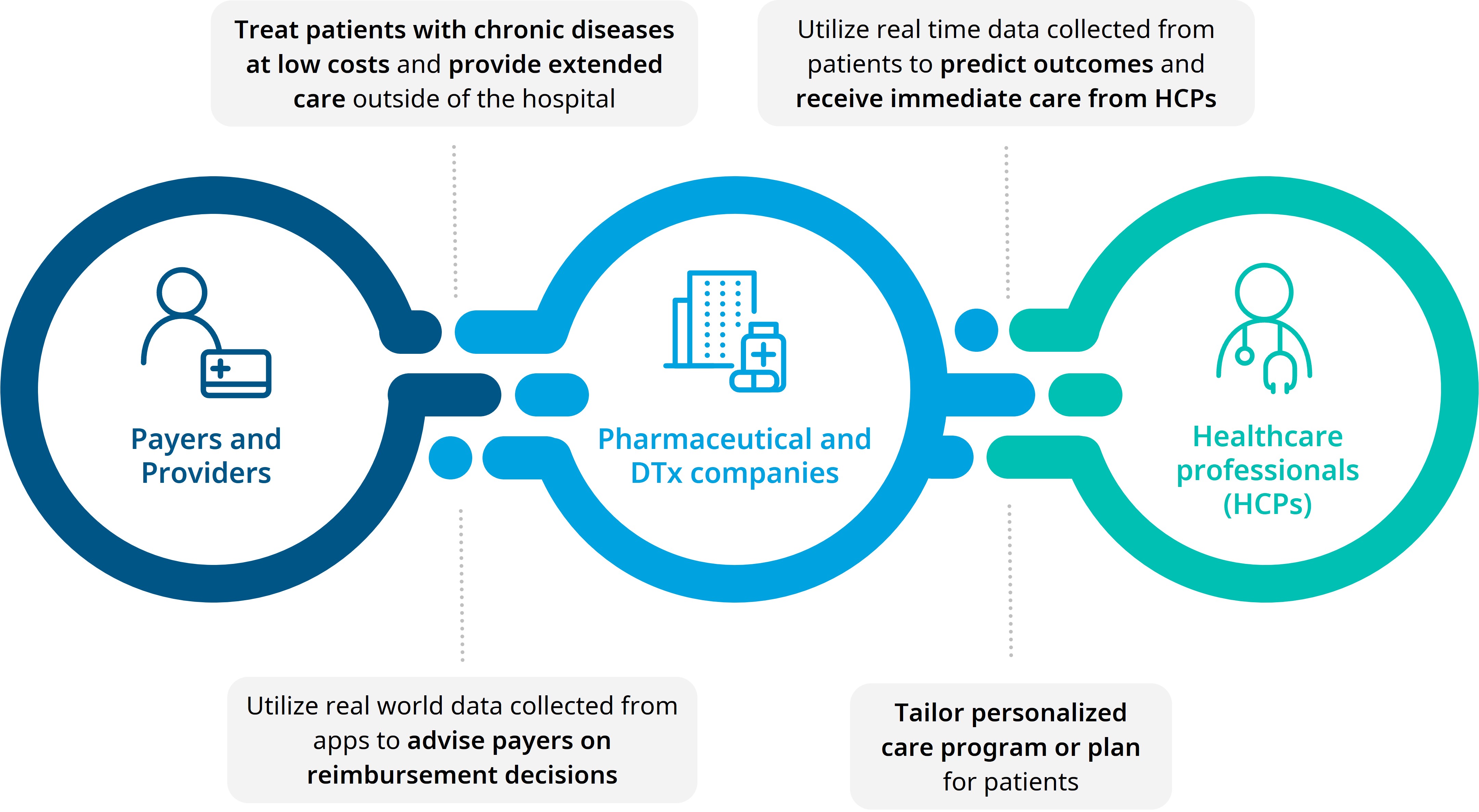





























- Locations
- Asia Pacific
- Improving continuum of care through digital therapeutics
In Asia Pacific (APAC), there is an increasing ageing population with more than 200 million people expected to move into aged 65 years and above. This represents a 71% increase in the number of elderly people between now and 20301. The ageing population tends to have a higher prevalence of chronic diseases and greater constraints on government spending is expected.
The situation is worsened by shortages in the healthcare workforce with the largest needs-based shortage of nurses occurring in Southeast Asia (SEA)2. Governments will try to minimize the impact on healthcare budgets by improving the cost effectiveness of treatments and focusing on preventive care.
Digital therapeutics (DTx) play a pivotal role in assisting healthcare providers deliver patient care outside of hospitals. DTx apps help to reduce re-admission rates and enable care providers to tailor services to each patient's specific needs and improve outcomes. They also make funding more flexible through bundling of services rather than funding by per hospital day or visit.
Continuing patient care outside of a hospital’s four walls
Let’s take the following hypothetical situation:
Consider a heart attack survivor who after being discharged from the hospital, is expected to continue the recovery at home. Returning home after a heart attack can be a frightening situation especially in comparison to the close monitoring and safety they may have felt at the hospital. To manage recovery, they are often scheduled for frequent follow ups which entail travel, expenses, waiting times and care management in between visits.
Imagine how a patient could incorporate digital monitoring into the recovery plan:
Figure 1: Enhanced patient journey assisted by Digital therapeutics (DTx)

With digital therapeutics, healthcare professionals (HCPs) can monitor patients in real time beyond healthcare facility settings and provide digital triage and/or telephone triage to support patients in taking control of their health.
DTx also provides voluminous amounts of data. This real-world evidence contributes greatly to studying the efficacy of interventions, population health trends, and even establishing the value of the digital therapeutic itself.
Early potential indications for digital companion therapies are primarily in chronic disease management which include (non-exhaustive):

Chronic care models for the future
To create a closed loop strategy for patient care outside of hospitals, all stakeholders are encouraged to work closely with each other:
Figure 2: Stakeholder collaboration across the healthcare ecosystem

Some developed countries like US, Europe and Australia have implemented ‘home hospital’ models, which seek to address the shortage of hospital beds and high operational costs by providing inpatient care at home with comparable clinical outcomes. These services include regular visits by doctors, nurses and allied health professionals in addition to utilizing digital tools such as remote monitoring and telecommunication technologies. In SEA, Singapore was the first country to launch the ‘home hospital’ trial in 2021 and the study is expected to complete by the end of 2022.
With a plethora of new tools, healthcare delivery will continue to evolve at an accelerated pace and good planning and governance are key in making sure that resources, investments, and systems are in the right place.
For more information on the continuum of patient care and digital therapeutics, please feel free to contact us.
References
1 Advancing into the Golden Years. Marsh & McLennan Companies’ Asia Pacific Risk Center (APRC).
2 State of the world’s nursing 2020 report. World Health Organization.


